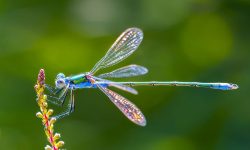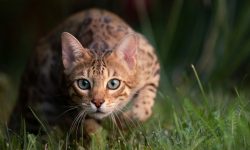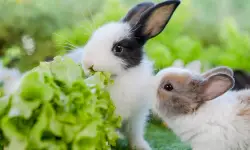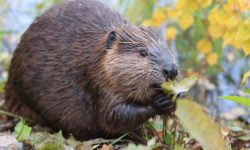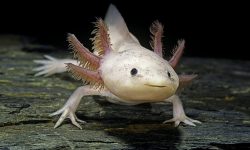Fish are some of the most diverse and fascinating creatures on Earth. They inhabit nearly every aquatic environment — from crystal-clear mountain streams to the deepest parts of the ocean. With over 34,000 species, it’s no surprise that their diets are just as varied as their habitats. But whether they’re colorful reef dwellers, graceful freshwater swimmers, or the fish in your home aquarium, one question always arises: What do fish eat?
The answer depends on their species, environment, and role in the food chain. Some fish are carnivores that rely on smaller prey, while others are herbivores grazing on aquatic plants. Many are omnivores that consume both animal and plant matter. Understanding these feeding habits not only helps us appreciate fish ecology but also ensures we feed aquarium fish properly for optimal health and color.
In this detailed guide, you’ll learn about 20 foods fish love in both aquariums and the wild. From live prey and insects to algae, worms, and specially formulated pellets, we’ll explore how fish find, hunt, and enjoy their meals beneath the water’s surface.
Understanding Fish Feeding Habits

Before diving into the foods, it’s essential to understand that not all fish eat the same way. Their diet is closely linked to their natural habitat, mouth shape, and body design.
The Three Main Types of Fish Diets:
- Carnivores – Eat meat and rely on other aquatic animals for nutrition. Examples: bettas, cichlids, groupers.
- Herbivores – Feed mainly on plants and algae. Examples: surgeonfish, parrotfish, plecos.
- Omnivores – Consume both animal and plant matter. Examples: goldfish, guppies, tilapia.
Understanding which category your fish belongs to helps ensure they receive a balanced diet. In the wild, fish rely on instincts to hunt or graze, while in aquariums, it’s up to caretakers to replicate that diet as naturally as possible.
20 Foods Fish Love in Aquariums and the Wild
1. Algae
Algae are one of the most common and essential food sources for herbivorous and omnivorous fish. In the wild, fish graze on algae that grow on rocks, coral reefs, and submerged surfaces.
In aquariums, algae serve both as a natural snack and as an important source of vitamins and minerals. Species like plecos, mollies, and tangs are known to scrape algae off glass and decorations constantly. Supplemental algae wafers can also help provide consistent nutrition.
2. Plankton
Plankton forms the foundation of aquatic food chains. Many small fish and filter feeders such as sardines and anchovies consume zooplankton (tiny animals) and phytoplankton (microscopic plants).
These microorganisms are rich in protein and omega-3 fatty acids. In aquariums, powdered plankton or liquid plankton solutions mimic this natural diet, ideal for small schooling fish or coral reef inhabitants.
3. Insects and Larvae
Insects and their larvae, like mosquito larvae or daphnia, are favorite meals for many freshwater species. In the wild, fish often skim the water’s surface to catch insects or feed on larvae floating near the shore.
In captivity, live or frozen insect larvae make excellent high-protein treats. Bettas, tetras, and gouramis especially enjoy the natural motion of live food, which stimulates their hunting instincts.
4. Worms
Earthworms, bloodworms, and tubifex worms are highly nutritious and packed with protein. Wild fish find them burrowed in sediment, while aquarium fish enjoy them as live or frozen meals.
Bloodworms are particularly popular for brightening colors and supporting growth. However, overfeeding can lead to digestive issues, so they should be served as treats rather than daily food.
5. Crustaceans (Shrimp and Krill)
Crustaceans like shrimp, krill, and small crabs are rich in proteins, carotenoids, and healthy fats. In the ocean, carnivorous fish such as wrasses and groupers feed on these tiny shellfish.
In aquariums, freeze-dried or frozen brine shrimp and krill provide excellent nutritional benefits. The carotenoids enhance vibrant colors, especially in tropical fish and cichlids.
6. Small Fish
Predatory species like lionfish, pike, and barracuda feed on smaller fish in the wild. This diet provides essential amino acids and fats for growth and energy.
For aquarium carnivores, feeder fish such as guppies or minnows are sometimes offered, but this should be done cautiously to prevent disease transmission. It’s often better to use frozen or specially prepared alternatives.
7. Aquatic Plants
Herbivorous fish rely heavily on aquatic plants for fiber, minerals, and energy. In the wild, they nibble on water lettuce, hydrilla, duckweed, or filamentous algae.
In aquariums, plants like anubias, hornwort, and java moss not only beautify the tank but also serve as natural snacks. Adding blanched vegetables like spinach or zucchini can replicate this plant-based diet effectively.
8. Snails
Snails are a natural food for many carnivorous and omnivorous fish, especially loaches and pufferfish. They provide calcium and protein while helping maintain dental health for species with strong jaws.
In aquariums, you can occasionally introduce small pest snails for species that naturally feed on them. However, moderation is important to maintain ecosystem balance.
9. Detritus
Detritus — decomposing organic matter — might sound unappetizing, but it’s a key part of the diet for bottom-feeding fish like catfish and plecos. It includes decaying leaves, plant debris, and leftover food particles.
In nature, detritivores help recycle nutrients and keep the water clean. In aquariums, they can be sustained with sinking pellets designed for bottom dwellers.
10. Zooplankton and Micro-Crustaceans
Small fish, fry, and coral reef species rely on micro-crustaceans like copepods and amphipods. These tiny creatures provide essential fatty acids that support growth and immune health.
Aquarists often culture live copepods for marine tanks to feed small reef fish and corals. They also improve water quality by cleaning up leftover organic matter.
11. Pellets and Flakes
Commercially formulated fish flakes and pellets are the mainstay of aquarium diets. They contain a balanced blend of protein, vitamins, minerals, and sometimes spirulina for coloration.
Pellets are ideal for larger fish, while flakes suit small to medium species. Always choose high-quality brands to ensure your fish get proper nutrition without unnecessary fillers.
12. Algae Wafers
Algae wafers are specially designed for herbivorous and bottom-dwelling fish. They contain spirulina, kelp, and plant proteins that mimic the natural diet of algae grazers.
Plecos, otocinclus, and other algae eaters benefit from wafers that sink to the bottom. This ensures they get their fair share of food, even when faster fish dominate the surface.
13. Brine Shrimp
Brine shrimp are a staple live or frozen food in aquariums. They are small, soft, and easy to digest, making them perfect for fry and adult fish alike.
Rich in protein and fatty acids, brine shrimp promote healthy growth and color enhancement. They also encourage active feeding behavior, making mealtime more natural.
14. Krill
Krill are small crustaceans that form a significant part of the oceanic food web. In the wild, species like salmon, mackerel, and larger reef fish feed on them.
In aquariums, krill is available in freeze-dried or frozen form and serves as a protein-rich food that enhances red and orange pigmentation in ornamental fish.
15. Eggs (Fish Roe)
In nature, fish eggs are a nutritious and readily available meal for predators and opportunistic feeders. Many fish species feed on the eggs of other species during spawning seasons.
In aquariums, fish roe can be offered in small amounts as a high-protein treat, often improving energy and breeding performance.
16. Marine Sponges and Corals
Certain tropical fish, like angelfish and butterflyfish, feed on sponges and coral polyps. This diet is specialized and rich in marine fats and minerals.
Replicating this diet in aquariums requires specially formulated foods containing sponge matter or marine proteins. This helps maintain the health and coloration of these delicate reef species.
17. Crustacean Shells and Exoskeletons
Fish that feed on crustaceans also consume their shells, which are high in calcium and chitin. These materials strengthen bones and scales.
In aquariums, shrimp shells or crab exoskeleton powder can be used as supplements, especially for growing fish or those that frequently shed scales.
18. Fruits and Vegetables
Some omnivorous and herbivorous fish enjoy fresh fruits and vegetables. In the wild, they nibble on fallen fruits or aquatic plant roots.
You can feed aquarium fish blanched peas, cucumber slices, zucchini, or even small fruit bits like melon or apple. These provide fiber and help prevent constipation, particularly in goldfish.
19. Live Prey (for Predatory Fish)
Large carnivorous fish such as arowanas, oscars, and lionfish thrive on live prey. In nature, they eat small fish, frogs, and crustaceans.
In aquariums, live feeding can stimulate natural hunting instincts. However, it should be done carefully with quarantined, disease-free prey. Frozen substitutes often provide a safer and equally nutritious option.
20. Artificial Diets (Formulated for Specific Species)
Advanced aquaculture and aquarium nutrition now offer species-specific diets. These foods cater to the exact nutritional needs of bettas, cichlids, koi, marine fish, and even fry.
These balanced diets include everything from protein and spirulina to vitamins that enhance immune strength and coloration. For home aquariums, these foods simplify feeding and ensure long-term health.
How Fish Eat: Unique Feeding Mechanisms
Fish feeding techniques are as diverse as their diets. Their mouths and body shapes have evolved for specific feeding strategies:
- Surface Feeders: Have upturned mouths for eating insects or floating food.
- Midwater Feeders: Grab suspended particles or chase small prey.
- Bottom Feeders: Possess downward-facing mouths to scoop detritus and worms from the substrate.
- Filter Feeders: Use gills to trap plankton and small organisms, as seen in whale sharks and anchovies.
Understanding these differences helps aquarium owners choose appropriate food shapes and sinking levels.
Feeding Fish in Aquariums: Best Practices
- Feed small portions frequently. Overfeeding causes water pollution and health issues.
- Match food type to species. Carnivores need protein-rich meals, herbivores need plant-based foods.
- Vary the diet. Alternate between dry, frozen, and live foods to provide complete nutrition.
- Clean up leftovers. Uneaten food decays and affects water quality.
- Observe feeding behavior. Healthy fish eat eagerly; changes in appetite may indicate stress or disease.
Proper feeding not only improves health but also enhances color vibrancy and breeding success.
What Do Fish Eat in the Wild?
In natural environments, fish diets are dictated by what’s available:
- Freshwater fish eat insects, crustaceans, worms, algae, and plant debris.
- Saltwater fish consume plankton, smaller fish, crustaceans, and coral matter.
- Deep-sea fish rely on detritus and bioluminescent prey drifting from the surface.
Each ecosystem provides a unique balance of nutrients that fish depend on for survival.
FAQs About What Fish Eat
Do fish eat bread?
Bread is not recommended—it expands in their stomachs and causes digestive issues.
Can I feed fish raw meat?
Only if it’s part of their natural diet. Raw meat can introduce bacteria, so cooked or frozen alternatives are safer.
Do fish eat other fish?
Yes, many carnivorous species do. It’s a normal part of aquatic food chains.
Can fish eat vegetables?
Yes, many omnivorous fish enjoy vegetables like peas, spinach, and zucchini for added fiber.
How often should I feed my fish?
Most aquarium fish should be fed 1–2 times daily, with only what they can consume in about two minutes.
The Role of Fish in the Food Chain
Fish occupy every level of aquatic food chains, from tiny plankton eaters to apex predators. Herbivores keep plant growth in check, omnivores recycle nutrients, and carnivores regulate population balance.
In both oceans and freshwater systems, fish diets influence entire ecosystems — from algae blooms to coral reef stability. By understanding what fish eat, we can appreciate how interconnected aquatic life truly is.
Conclusion
From algae and insects to worms and small fish, the diet of fish is as diverse as the waters they inhabit. Whether in the wild or in aquariums, every species has evolved unique feeding behaviors and preferences that keep ecosystems thriving.
Knowing what fish eat isn’t just about feeding them—it’s about understanding their biology, environment, and role in the natural world. By offering the right balance of nutrition and variety, aquarium keepers can mimic nature’s menu and keep their fish vibrant, healthy, and active.

